Bacteria in the gut
introduction
The human body is a habitat for over 1012 types of bacteria, a large part of which populate the intestines. Bacteria are generally associated with infections and diseases.
In the intestine, however, the bacteria play an important role in maintaining the immune system and protecting against harmful microorganisms.
For this reason, a healthy intestinal flora is important for health.
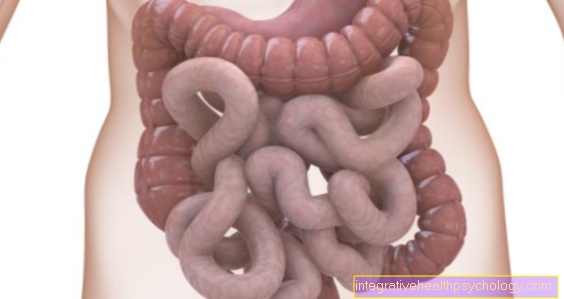
The natural intestinal flora
The first bacteria of the natural intestinal flora are transmitted with the contact between the newborn and its mother during the birth.
The mother's vaginal and perianal flora (bacterial colonization around the anus) enter the child's digestive tract via the mouth. A large part of these bacteria make up the later normal intestinal flora (e.g. E. coli, enterobacteria & streptococci).
Bacteria are then ingested through food during childhood. The healthy intestinal flora of an adult consists primarily of anaerobic (without oxygen) bacteria. The number is approximately 10-100 billion bacteria in the human digestive tract. A large part of this is located in the large intestine. It is also currently assumed that there are around 1,800 genera and 36,000 different types of bacteria.
The function of the bacteria in the intestine is, among other things, the formation of short-chain fatty acids, stimulation of the intestinal peristalsis (movement of food through the intestinal muscles), support of digestion and strengthening of the immune system.
How can you build the natural bacteria?
When it comes to the build-up of natural bacteria in the intestine, nutrition is particularly important. A high consumption of finished food in the form of fast food or frozen food is not recommended.
The food preservation methods keep the food as germ-free as possible, which, however, also kills the benign bacteria that would settle in the intestine. Sour milk products such as quark, yoghurt or cheese are also recommended, which have a beneficial effect on the acidic flora of the intestine due to their acidic character.
Hydrogenated fats and overheated fats should be avoided. The overheated fats occur in pan dishes, the nutrients can be used well by the faulty intestinal flora.
Alternatively, the intestinal flora is built up by substituting (replacing) “good” bacteria. Substitution of E. coli is not possible, as the colonization of the bacteria depends on various factors. In the case of lactobacilli and bifidobacteria, however, substitution therapy is possible and is increasingly used.
Types of bacteria
The colonization of the intestines with bacteria begins in naturally born children during vaginal delivery. The first bacterial strains can be detected a short time after birth. The colonization of the intestine with Escherichia coli, enterobacteria (technical term: Enterobacteriaceae) and streptococci begins very early. Since the natural birth process therefore plays a decisive role in relation to the bacterial colonization of the intestine, the early childhood intestinal flora can be significantly changed by a birth by caesarean section.
Read more about this under: Escherichia coli
Children who were born through a caesarean section initially have an unnaturally changed intestinal flora that corresponds to the maternal skin flora. In addition to the birth process, diet also has a significant influence on which bacteria settle in the intestine. In this context, one can usually draw conclusions on the basis of the intestinal flora as to whether a child is being breastfed or is only receiving bottle feeding.
In the case of fully breastfed children, mainly lactic acid-producing bacteria (so-called bifido and lactobacilli) can be found in both the large and small intestines within the first few weeks of life. The lactic acid (lactate) produced by these bacterial strains causes the pH level inside the intestines to drop. The intestinal environment of these children therefore takes on a sour character. In contrast, children who are mainly fed bottle-fed food develop bacteria in the intestine at an early stage that correspond to the adult intestinal flora.
In adulthood, the intestinal flora is characterized by a large number of different types of bacteria. In healthy adults, mainly so-called anaerobic bacteria (bacteria that do not need oxygen to survive) can be detected in the intestines. Around 90 percent of the bacteria in the adult large intestine can be assigned to the genera Firmicutes, Bacteroidetes, Proteobacteria and Actinobacteria. In the microflora of the small intestine, however, there are mainly facultative anaerobic bacteria of the genera Enterococcus and Lactobacillus. Facultative anaerobic bacteria can survive in both oxygen-poor and oxygen-rich environments.
In addition to these health-promoting bacteria, disease-causing bacterial pathogens can also settle in the intestine. Classic examples of such bacteria in the intestine are enterohaemorrhagic E. coli (EHEC), enteropathogenic E. coli (EPEC), enteroinvasive E. coli (EIEC) and enterotoxic E. coli (ETEC). Bacteria from the group of enterohaemorrhagic E. coli (EHEC) lead to bloody (haemorrhagic) diarrheal diseases in humans.
E. coli
E.coli (Escherichia coli) is a bacterium that occurs in our intestines.
Most of the E. coli strains are not pathogenic to humans. Rather, it is an important part of the intestinal flora.
E.coli plays an important role in digestion - the bacterium is an important vitamin producer. E. coli mainly produces vitamin K.
The strains that are pathogenic, however, can cause urinary tract infections (UPEC), meningitis (NMEC) or intestinal diseases (EHEC / AIEC).
However, these pathogenic strains do not normally occur in our intestines. In order to cause a urinary tract infection, the bacteria must first come into contact with the urinary tract.
Bacteria in the gut that cause diarrhea
Diarrhea can be caused by various pathogens. Especially when small children are affected, one can assume that it is mostly a viral infection. In adults who suffer from diarrhea, however, pathogenic bacteria can often be detected in the intestines. In principle, numerous infectious diseases (for example dysentery or salmonella infections) can lead to severe diarrhea. In most cases, the pathogenic bacteria in the intestine excrete toxins that lead to inflammatory processes in the intestinal mucosa.
As a result, more fluid from the circulatory system can seep into the intestinal tube via the damaged intestinal walls. Affected patients usually develop a high fever, abdominal pain, and diarrhea.
Bacteria in the gut that cause diarrhea:
-
E. coli bacteria
-
Campylobacter
-
Salmonella
-
Staphylococcus
-
Clostridium difficile
-
Shigella (pathogen of dysentery)
-
Vibro cholerae (causative agent of cholera)
Diarrheal diseases caused by salmonella are mostly food-borne. For this reason, everyone who has eaten contaminated food usually develops diarrhea and / or vomiting at the same time. Products made from poultry, beef and pork are the main possible sources of infection. In addition, Salmonella can often be detected in raw eggs, egg foams, creams, confectionery and mayonnaise. Patients who have these bacteria in their intestines develop watery diarrhea just a few hours after infection.
In addition, those affected typically have a high fever, severe abdominal pain and headaches. In most cases, the classic symptoms of Salmonella infection only last a few hours or days. The treatment of these bacteria in the intestine is carried out by taking an antibiotic for several days. Another bacterial pathogen that leads to diarrhea in many cases belongs to the group of E. coli bacteria. Although these bacteria in the intestine are actually considered a normal part of the intestinal flora, aggressive representatives of this group can take on a pathological character. The patients suffering from an E. coli infection develop a serious clinical picture within a very short time. Typical symptoms of these bacteria in the intestine are watery diarrhea, which can be accompanied by bloody additions, nausea, vomiting and severe abdominal pain. E. coli-associated diarrhea can be life-threatening, especially for babies, toddlers, the elderly and people with weakened immune systems.
Function of the intestinal bacteria
The main task of the health-promoting bacteria in the intestine is the direct defense against pathogens. This process is known in medical jargon as "colonization resistance". Within the intestine, this immune defense is mainly mediated by bacteria of the genus Escherichia coli. If the proportion of these bacteria in the intestine is reduced, for example by taking antibiotics, various diseases can break out.
A classic example of such a disease is so-called pseudomembranous colitis. In the presence of pseudomembranous colitis, the bacterium Clostridium difficile multiplies rapidly. This bacterium does not belong to the normal intestinal flora and can seriously impair the tissue by excreting various toxins. For this reason, affected patients often develop a high fever, abdominal pain, diarrhea, and fluid loss. In addition, the natural bacteria in the intestine play an important role in controlling the immune system.
However, this does not always have to be beneficial for humans. According to extensive studies, the intestinal flora has a stimulating effect on the reproduction of some pathogenic bacterial strains and amoeba, whereas the spread of other bacterial pathogens is inhibited. In addition, the bacteria in the intestine are involved in the absorption of various vitamins. In this context, vitamin B1, vitamin B2, vitamin B6, vitamin B12 and vitamin K play a decisive role. Without an intact intestinal flora, most of these vitamins cannot be absorbed, or only insufficiently, through the intestinal mucosa.
This results in pronounced deficiency symptoms for the affected patients. A deficiency in vitamin B1 (synonym: thiamine), for example, can lead to irritability, depression, tiredness and anemia. The lack of vitamin B12 can make itself felt through far-reaching changes in the blood count.
In addition, it is now assumed that a pronounced deficiency in vitamin B12 favors the development of diseases such as dementia, concentration disorders and psychoses. Furthermore, some bacteria in the intestine produce the vital vitamin K, which the human organism cannot produce itself. Vitamin K plays a crucial role in the production of various blood coagulation factors, in bone metabolism and in cell growth regulation. For this reason, a long-term deficiency in vitamin K can lead to blood clotting disorders and diseases of the skeleton. In addition, it has meanwhile been proven that patients suffering from a deficiency in vitamin K are significantly more likely to have extensive vascular calcifications.
In addition to the function of absorbing vitamins, the bacteria in the intestine are also assigned a digestive function. The bacteria in the intestine have been shown to be important helpers in the digestive process. For this reason, a disturbed intestinal flora can have a negative effect on health. The bacteria in the intestine play a crucial role in the digestion of carbohydrates. The reason for this is the fact that a large number of the bacterial pathogens that exist in the intestine have enzymes that the human organism cannot produce itself.
The absorption of essential minerals from food would also be ineffective without the support of the bacteria in the intestine. In this context, the minerals calcium, magnesium and iron are particularly noteworthy. Other functions of the bacterial pathogens within the intestine include stimulating intestinal motility and the production of short-chain fatty acids. In addition, it is now assumed that the bacteria in the intestine could also have an impact on endurance performance.
Bloating from bacteria in the intestines
Flatulence is a natural component of digestion. Flatulence is a gas that is produced by fermentation and putrefaction processes in the intestine.
The gases are, for example, methane, hydrogen sulfide and carbon dioxide. Especially the sulfur compounds, such as Hydrogen sulfide provide the smell of flatulence.
While a volume of approx. 0.5 to 1.5 liters of emitted gases per day is normal, it can also lead to increased gas formation.
In this case, it is often a question of food intolerances, such as lactose intolerance.
Read more on the topic: Causes of Flatulence
Pathological intestinal flora
With the background knowledge that the human intestinal flora takes on many important functions, it is understandable that an imbalance in the bacterial colonization and a pathological intestinal flora have an impact on health.
Either too high or too low a colonization or an incorrect composition can be the reason for a change in the intestinal flora.
Symptoms of a pathological intestinal flora are e.g. Flatulence, abdominal pain or a higher susceptibility to infections. Food intolerances can also occur.
The lactulose-H2 breath test is used to check for incorrect colonization of the small intestine. With the help of stool analyzes, the colonization status of the colon can also be clarified.
Causes of a pathological intestinal flora
The most pronounced and frequent changes in the intestinal flora in a pathological direction occur through antibiotic therapy. This not only kills the pathogens against which the antibiotic is used, but also the naturally occurring bacteria in the intestinal flora. Antibiotic-associated diarrhea can occur as a result of antibiotic therapy.
In most cases, however, the balance of the intestinal flora is restored after a few weeks. Another complication from antibiotic therapy can be "pseudomembranous colitis". The intestinal flora is severely damaged by antibiotics and the bacterium "Clostridium difficile" has the opportunity to multiply extremely thanks to the newly gained space, which leads to inflammation of the intestine.
A stool transplant is a common therapy method. Aside from responsible antibiotic therapy, one should also watch one's diet. Fast food and frozen food are not conducive to the development and maintenance of a natural intestinal flora and should therefore not be consumed too much.
Symptoms of pathological bacteria in the intestines
Incorrect colonization of the intestine is the most common cause of abdominal pain and gas.
This can be explained by the fact that the bacteria in the intestines play an important role in digesting food. If the digestion is disturbed, there is increased decomposition of the food. The result is flatulence.
In the case of abnormal colonization of the intestine such as the "pseudomembranous colitis" caused by Clostridium difficile mainly leads to abdominal cramps and diarrhea.
In addition, the stool of the sick is increasingly reported as having a characteristic malodor.
Further symptoms of a pathological colonization of the intestine can be
- chronic diarrhea,
- high-fat stools
- and the formation of a bloated stomach.
A distinction can be made between disturbed small intestine and large intestinal flora. If the disorder is in the small intestine, the bloated stomach goes back without the escape of gases. In the case of a disorder of the large intestine, the bloated stomach is accompanied by the discharge of intestinal gases.
How can you fight pathological bacteria in the intestine?
Diet is also the key to combating pathological intestinal flora with an imbalance or incorrect colonization of the bacteria.
Easily digestible food, which is low in fiber and fat at the same time, protects the previously damaged intestinal mucosa and provides few nutrients for the pathological intestinal flora.
It is also important to use antibiotics responsibly, in order to avoid an imbalance in the intestinal flora in the first place. Before any antibiotic administration, one should justify the necessity and keep in mind that the administration of antibiotics has harmful effects on the intestines and the natural intestinal flora.
Which bacteria in the intestine are contagious?
Some bacteria, which occur naturally in the intestine, can cause illness in certain situations.
There are some examples (Proteus, Klebsielle, E.coli) of bacteria that can cause diseases such as pneumonia or urinary tract infections if they get from the intestine to other parts of the body.
The proximity of the anus and vagina of women in particular often leads to infections.
What are histamine-producing bacteria?
Histamine production is attributed to some bacteria in the human intestine.
This can be a problem, especially in the case of histamine intolerance or allergy. In this context, symptoms such as skin irritation, vomiting, diarrhea and asthma attacks have been reported.
However, it should be noted that the clinical picture of histamine intolerance is not accepted by all doctors, much less that they are aware of it. Among the histamine-producing bacteria, the bacterium Morganella morganii (formerly Proteus morganii) is given. It is advisable to measure the activity of the enzyme diamine oxidase (DAO) in order to investigate the presence of the bacterium.
Alternatively, a stool exam can be performed. However, the clinical picture and the diagnosis are more likely to be assigned to alternative medicine and not sufficiently scientifically proven. For this reason, the topic should be viewed with a certain skepticism in the context of conventional medicine.
Intestinal bacteria
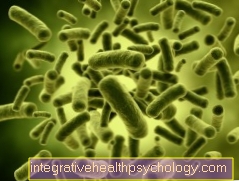
The human intestine is rich in microbial pathogens. It is colonized by bacteria as well as archaea (primordial bacteria) and eukaryotes (living beings whose cells have a nucleus). In general, it can be assumed that there are around ten times as many microorganisms in the intestine as there are cells in the human body.
There are more bacteria in every single gram of stool than there are humans on earth. How many different types these bacteria can be assigned to in the intestine is still unclear. However, it is believed that around 1000 to 1400 different bacterial strains can be found within the intestine. In a direct comparison between the small and large intestines, the bacterial colonization of the large intestine is found to be much denser.
The bacteria in the intestine are roughly divided into two groups: the harmful, putrefactive bacteria (synonym: coli bacteria) and the health-promoting bacteria (synonym: probiotics) to which, along with many other bacterial strains, the well-known lactobacteria and bifidobacteria belong. In addition, it has already been proven that the colonization density of bacteria in the intestine is comparatively low in newborns and small children.
In the course of life, however, the number of bacteria in the intestine increases steadily and grows into an extensive microflora. This microflora is involved both in the direct defense against pathogens (so-called colonization resistance) and in the modulation of the immune system. Above all, the bacterial pathogens that are located in the large intestine do not necessarily have to be pathological. In addition to supporting the digestive process, these bacteria play a decisive role in the absorption of vitamins and in stimulating the mobility of the intestinal loops (stimulating intestinal peristalsis).
The presence of such enormous amounts of bacteria in the intestine is therefore even beneficial for the human organism. However, experimental studies on mice have shown that some bacterial pathogens and various amoebas only develop pathogenic properties through the presence of the intestinal flora. In addition, a deviation from the usual imbalance of the bacteria in the intestine can have a negative impact on the state of health.
Bacteria that are not usually found in the intestines can also lead to serious gastrointestinal diseases that are accompanied by nausea, vomiting and diarrhea.
Constipation from bacteria in the intestines
The bacteria in the intestine are considered to be important aids in digestion. For this reason, it is particularly important to maintain the natural intestinal flora. A marked imbalance between the bacteria that usually persist in the intestine can lead to both diarrhea and constipation. In this context, constipation is provoked by the lack of certain bacteria that can break down food components. Patients who often suffer from constipation should therefore consult a specialist promptly and have the possible causes of the digestive problems investigated. If the chronic constipation is based on an imbalance of the bacteria in the intestine, this can usually be treated using comparatively simple methods.
Recommendations from the editorial team:
Do you know which diseases can be triggered by bacteria in the intestine?
Find out more here!
- Gastrointestinal diseases
- Diarrheal diseases
- pseudomembranous colitis
- constipation
- Salmonella

.jpg)


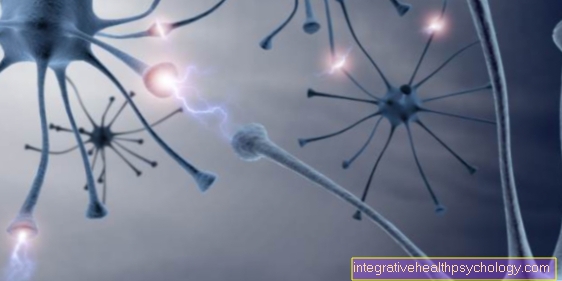







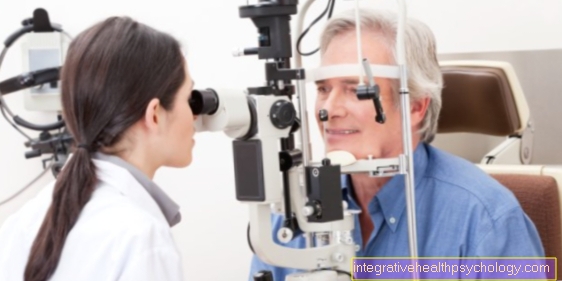



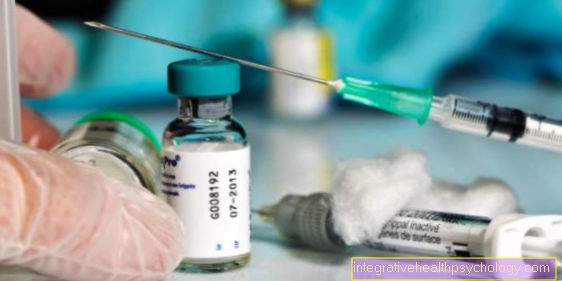





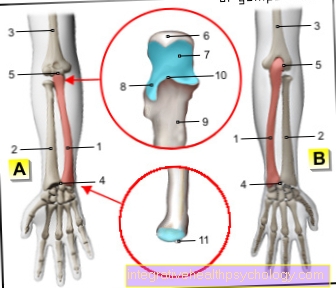
.jpg)





